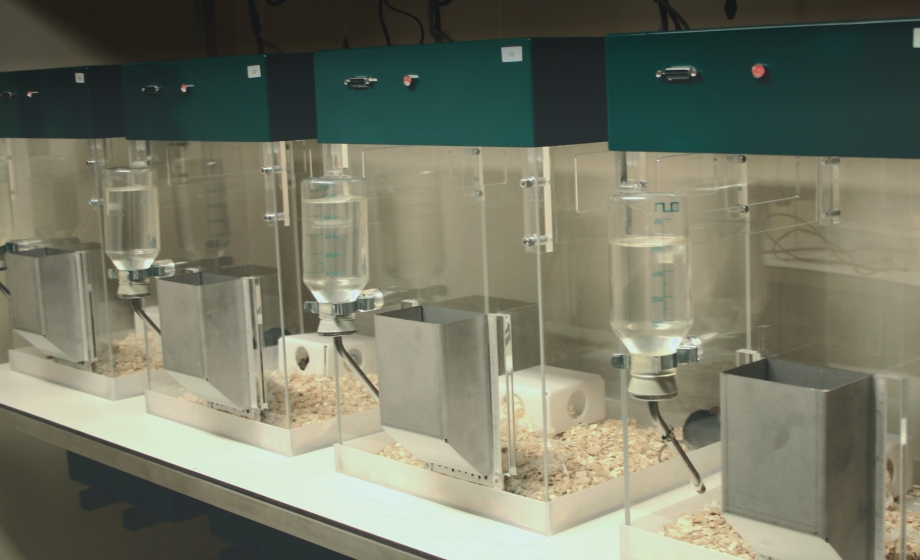Q&A Report: Lessons From The Core: Longitudinal Assessment vs. Point Sampling of Behaviors in Mice
When training for operant tests, have you used normal food or sucrose pellets in addition to standard food chow freely available?
L. Bikovski: Great question, we tested a few methods. Our initial preference was a combination of standard food with an incentive of sucrose pellets, but it elicit less motivation for our mice (we tested FVB, ICR or CD-1, and C57 black). The best method is to use food pellets as motivation. We use Bio-Serv 20mg Dustless Precision Pellets.
How do you get acceptance by regulatory agencies to substitute or augment home cage data for standard testing data?
L. Bikovski: There are 2 ways to look at your question:
1. You don’t. We do not have sufficient data from HCS to substitute standard testing. This is why we combine data from standard methods\tools with HCS data. Once you can validate your data from the HCS you may be able to claim you can reduce the use of standard tools\methods.
2. Our biggest claim today is that by using HCS we are in fact meeting the requirements of the 3r’s, while improving our data (e.g. longitudinal vs sampling). HCS allows us in the long run to Reduce number of mice. HCS are the embodiment of Refinement as we are advancing our mice welfare by exploiting the latest technologies and by improving understanding of the impact of welfare on scientific outcomes.
Have you looked at the influence of repeated assessment on home cage outcomes? In other words, does longitudinal measurement itself influence the results?
L. Bikovski: Great question: In motor and well-being there are changes in a few behaviors over time. They are less exploring (e.g. distance traveled), they do more grooming (most likely as they are alone and this is a coping mechanism), and they spend more time on the running wheel. In cognition, I don’t really know as we have limited data. I can only say that they use the cognition wall more over time, and they become obsessive to it. When we use delay (a few days to a week) between 2 sessions with the cognition wall they start to use the wall obsessively almost immediately. One point for consideration, which is not an effect of longitudinal as it is an effect of the method\tool itself. Most HCS are not yet adapted to group housing and thus force use to single house or mice. The stress response caused by isolation might impact behavior in some strains. However, the effect of social isolation can be easily reduced by adding environmental stimuli to the home cage (e.g. shelter or running wheel).
Did the UV light damage the visual systems of the mice?
S. Parikh: This is a very good question. We haven’t checked officially but it might have been affected. Considering the timeline of 8 weeks with UV radiation we didn’t see any inflammation or redness of the eyes, so we assume that, at least visually, their eyes looked fine.
How do you find home-cage activity compares quantitatively to activity in open field chambers?
L. Bikovski: Assessing activity measurements (e.g. pixel changes) in a HCS is very different. First of all, you need to use total and not average, and it is advised to look at the data in time segments (e.g. 4 hours or 12 hours).
Do you have any explanation for the sex difference in response to UV light?
S. Parikh: That’s an interesting question. I cannot say much in detail, but there is likely a strong involvement of the sex hormones in this response as we see a higher prevalence of melanoma in men than in women.
Do you think that home cage systems can replace Standard tools used today?
L. Bikovski: Not yet, and maybe not ever. As we are still limited in the ability to use high stress motivators (e.g. water and foot shock) in HCS we are forced to assess mice with standard sampling tools\methods. Most of the data we have is still from standard methods\tools (this is why we call them standard), so until we will have a significant body of information from HCS we are forced to rely on standard methods\tools.
What do you think about the use of metabolic measurements in the home cage in regards to behavioral assessment?
L. Bikovski: Metabolic assessment will give us the ability to quantify compensation techniques like energy expended (e.g. how much energy was used to solve this cognitive task). This is extremely important data that can give us indications for subtle differences and help to identify the exact time of onset for specific disorders.
